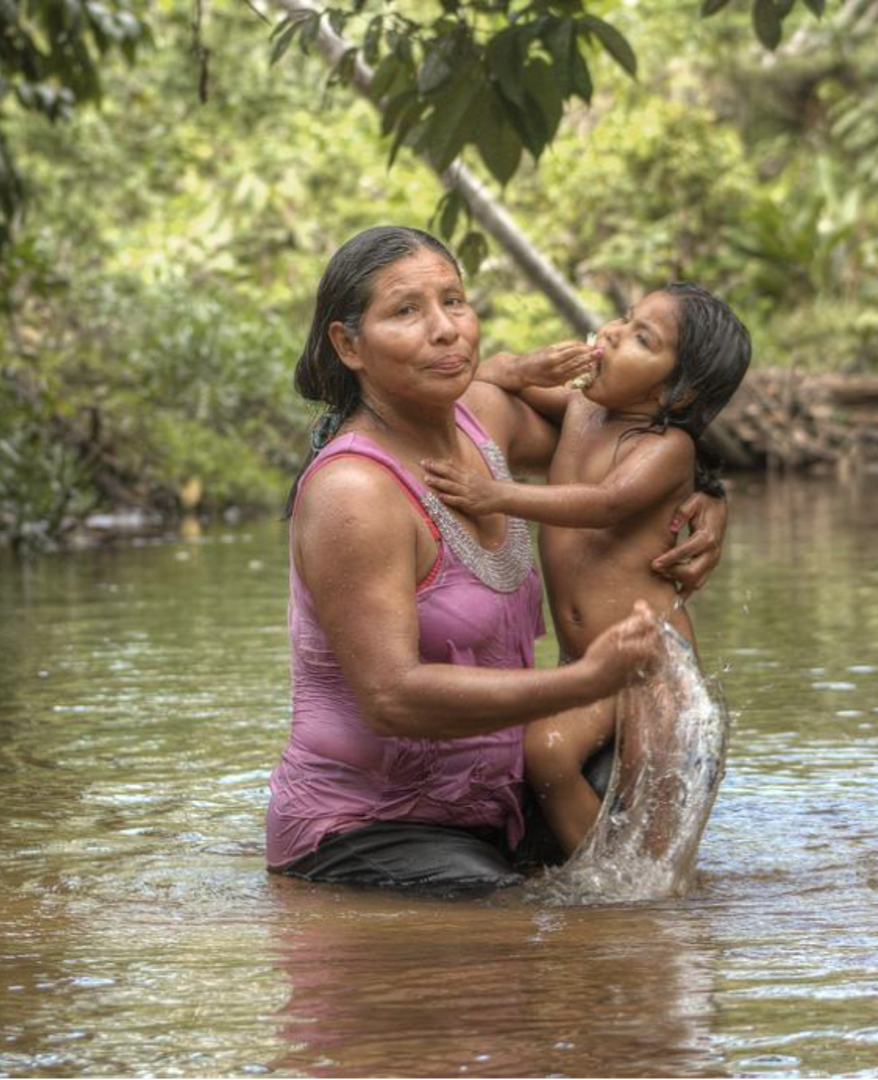Cancer and Co-Infection from Soil Transmitted Helminths, A Fellow's Capstone Project
, by Ms. Allison Frank, Cancer Research Training Fellow, Center for Global Health
I was excited to be accepted as a post-bachelors Cancer Research Training Award Fellow (CRTA) at the NCI Center for Global Health (CGH) in 2021. As a Fellow, I work on international cancer research programs and initiatives that further both the CGH mission, as well as my professional developmental goals. In addition we work on a capstone project that aligns with our areas of interest. For me, this meant strengthening my knowledge on cancer and co-infection from an epidemiologic perspective in preparation for my intended graduate studies in epidemiology. At the start of my fellowship, I connected with our Deputy Director, Dr. Patti Gravitt. As part of Dr. Gravitt’s work, she studies how soil- transmitted helminth (STH) infection can cause immune modulation, which leads to an increase in Human Papilloma Virus (HPV) persistence, the strongest indicator for cervical cancer. Because of my interest in cancer and co-infection, and inspired by Dr. Gravitt’s work, my capstone project will include a scoping review of STH infection and its connection to cervical cancer or HPV persistence.
I was further motivated by the opportunity to help Dr. Gravitt and CGH’s Dr. Marie Ricciardone plan and organize a session for a virtual Emerging Infectious Diseases workshop sponsored by the US-Japan Cooperative Medical Sciences Program. This was a cross-cutting session to explore the multiple aspects of possible immune dysregulation by helminth infection and its potential impact on viral-associated cancer risk. The session included three speakers who presented on the topic of Helminth infection and Persistent Oncogenic Infection.
As a fellow, it was a great experience to be able to have a role in shaping such an interesting and important meeting. During the workshop, I was able to connect with researchers in my field of interest and gain a broader understanding of the research landscape. I gained a lot from all the presentations, especially Eva Clark (M.D., Ph.D., CTropMed), Assistant Professor at Baylor College of Medicine. Dr. Clark presented on helminth-related immune dysregulation and cervical cancer risk, describing her work looking at the potential for STHs to cause immune dysregulation that could lead to HPV persistence. I plan to use some data from Dr. Clark’s work in my capstone project.
In 2018, over 500,000 people worldwide were diagnosed with cervical cancer and over 300,000 deaths were attributed to the disease (1). Although cervical cancer afflicts women across the globe, more than 85% of deaths occur in low- and middle-income countries (LMICs) (2). The known risk factors for cervical cancer include HPV type, immune status, co-infection with other multiparty infections, and tobacco use. While these non-viral factors have consistently been shown to increase the risk of progression to cervical cancer given HPV infection, persistently detectable high-risk HPV remains the strongest determinant of cancer progression. Because most non-viral risk factors have been identified through case-control study designs, there is uncertainty about whether they mechanistically increase risk by increasing persistence of High Risk-HPV (hr-HPV), increasing the risk of cellular transformation, increasing the risk of invasion, or a combination of the above (2).
It has been difficult to study why some people with HPV will clear the virus on their own while others will go on to develop cervical cancer (3). The Human Immunodeficiency Virus (HIV) epidemic has clearly pointed to a critical role of sustained immunity to clear HPV or, more likely, keep latent HPV infection well controlled (3). The role of immune suppression among high-risk groups like women living with HIV and transplant recipients is clear and has led researchers to look more broadly at other common immunoregulatory environmental exposures that may partially explain some of the global disparities in cervical cancer burden. Recently, an interaction between helminth infection and cervical cancer has been hypothesized as a possible explanation for the persistence of hrHPV. It has been shown that STHs, including schistosomes, hookworms, Ascaris (human roundworm), and Trichuris (human whipworm), can cause immune dysregulation which may compromise antiviral responses which could lead to higher rates of hrHPV persistence (4). STH infections are also more likely to be endemic in LMICs, which could be one explanation for high cervical cancer incidence rates in these regions.
Considering all these factors, I landed on the following research question for my scoping review: “What is the epidemiologic evidence to determine whether helminth infection is associated with an increase in HPV prevalence, persistence, or disease progression?” Through my capstone project, I am assessing the body of literature and potential next steps for further research regarding the co-infection of HPV and STHs and the implications for the current funding landscape. I’m also considering the possibility of expanding this review to include cancer and infection more broadly in my second year of fellowship. The opportunity to participate in the Emerging Infectious Diseases Workshop and explore professional development goals are examples of the unique experience that is afforded to fellows at the Center for Global Health. It has been an extremely enriching opportunity to design and conduct this review while simultaneously being involved in the planning and execution of related events. It has given me the opportunity to see research and practice come together in real-time and I am excited for all future opportunities in this area of research.

